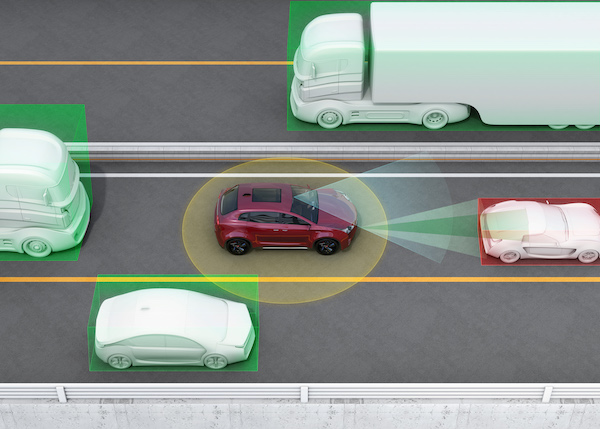As businesses continue to look for ways to streamline their operations, many are turning to autonomous driving lenses. These devices offer several benefits to people and organizations that use them, including reduced costs and improved efficiency, which benefit everyone. So let’s discuss how this type of UV lens revolutionizes the transportation industry.
According to statistics, vehicles on the road are increasing every year. In 2015, there were an estimated 1.2 billion vehicles on the streets worldwide, with a forecast to grow to 2 billion by 2035. With so many cars on the road, the need for efficient and safe transportation is more important than ever.
Reduce Accidents
In the United States alone, there are an estimated six million car accidents each year, many of which were preventable if automotive manufacturers more widely used autonomous driving technology. In addition, studies show that human error is responsible for 94% of all car accidents, so it’s no surprise that autonomous driving lenses are a viable technology for reducing accidents.
There are many different types of autonomous driving lenses. Still, they all work to provide a clear view of the road ahead, empowering the driver to make split-second decisions that could avoid an accident. In addition, these lenses can also help prevent accidents by reducing the need for human input in driver-assist situations.
For example, if a car in front of you suddenly stops, the autonomous driving lens automatically applies the brakes to prevent a rear-end collision.
Improved Efficiency
Autonomous driving lenses can also help to improve the efficiency of transportation. In many cases, people can use these lenses to plan the route of a vehicle ahead of time. Knowing this information can help avoid traffic jams and other delays that often occur during peak hours.
By choosing more optimized routes and avoiding traffic, autonomous driving lenses can help to reduce fuel consumption and emissions. For example, one study found that using these lenses could result in a 50% reduction in fuel consumption and emissions.
Preserves The Environment
In addition to improved efficiency, autonomous driving lenses can also benefit the environment. For example, these devices can help reduce the time that vehicles spend idling or sitting in traffic, leading to a reduction in emissions and helping to improve air quality.
Automate Deliveries
While we never imagined that the world George Jetson lived in was real, many of the cartoon’s concepts are becoming our reality. For example, many businesses are now using autonomous driving lenses to automate their deliveries. This technology is especially beneficial for companies that make frequent deliveries, such as grocery stores or restaurants.
Not only does this save time, but it also reduces the need for human input, which can lead to errors. In addition, automated deliveries can help preserve the environment by reducing emissions.
Lower Insurance Rates
Finally, autonomous driving lenses can help to save money for businesses and individuals. Business owners can often use these lenses to negotiate better rates with insurance suppliers. Since this technology operates quietly behind the scenes, it can result in a lower insurance premium without the need for extra coverage.
This cost-benefit can represent a significant saving for businesses to help improve the bottom line. For individuals, this can mean more money in their pocket each month.
What Are The Challenges Facing Autonomous Driving Lenses?
While there are many benefits to using autonomous driving lenses, some challenges also need to be addressed. One of the biggest challenges is the cost of these devices.
Autonomous driving lenses remain relatively expensive at the current time, making them inaccessible to many people and businesses. However, the price will likely decrease as the technology develops and becomes more broadly adopted.
Another challenge facing autonomous driving lenses is public acceptance. Some people are still hesitant to give up any control of their car to a computer. However, as more people learn about the benefits of these devices, they will likely become more accepted.
The final challenge is the infrastructure. For autonomous driving hi-res lenses to enjoy widespread use, the roads and highways require infrastructure upgrades that support the technology, including adding dedicated lanes for autonomous vehicles and installing the necessary sensors and cameras.
These infrastructure improvements will take time and money, but they are essential for the widespread adoption of autonomous driving lenses.
The Future Of Transportation
Autonomous driving lenses are a crucial component in the future of transportation. These devices offer many benefits, including improved safety, efficiency, and lower insurance rates. While some challenges need addressing, such as the cost and public acceptance, the technology will likely overcome these in time.
With the help of autonomous driving lenses, the future of transportation is looking bright.